Roland Mouret teams up with Maggie's
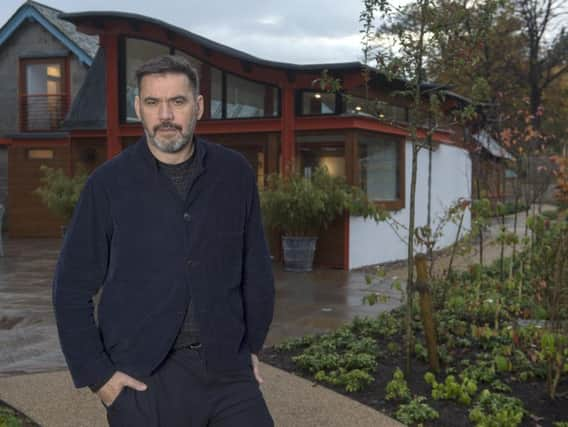

Christmas came early for Maggie’s Edinburgh when fashion designer Roland Mouret arrived in town with a sack full of catwalk shoes and his old friend the singer/songwriter Marc Almond to perform at a fundraising evening that saw the charity richer by £310,000 and rising.
“I’m not a Christmas person but this is Christmas, because it’s family coming back together to celebrate what we can do together. By ourselves we do things for Maggie’s, but together we can do something that is magical.”
Maggie's Ambassador
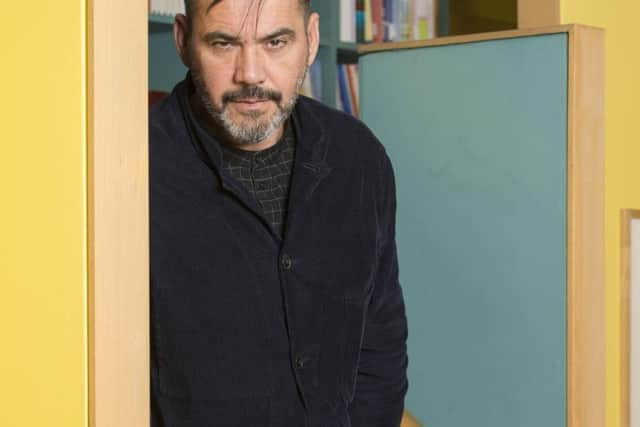

Advertisement
Hide AdAdvertisement
Hide AdA Maggie’s ambassador, Mouret has helped with fundraising since 2017, appearing at events and donating items for sale. He was introduced after Sarah Murray, who stocks his clothes in her Jane Davidson boutique, and Lisa Stephenson, Maggie’s fundraiser, friends and fellow users of the charity, asked the designer to come to Edinburgh to do something for Maggie’s. “From that determination, that’s how I came here,” he says, sitting back in the brightly coloured light-filled lounge room of the Edinburgh Maggie’s, where a cosy fire glows and conversations hum nearby.
Mouret has seen this centre, one of 20 in the UK, grow since he became involved three years ago. A £1.2m campaign, much of it the result of fundraising by Stephenson who uses Maggie’s after being diagnosed with cancer in 2011 (and has raised a further £1.6m through her own ‘Lisa’s Challenge for Maggie’s), saw its new extension opened last year.
“This was the original, but not the biggest so to see the extension, you can see what the building is going to do for the people who visit, especially after treatment next door. You feel respected here, feel the empathy of people giving what they could to make that space exist. It’s quite amazing.”
Mouret has personal experience of cancer after his dad, Maurice was treated for prostate cancer when the designer was in his thirties. “My parents did not want to talk about it, didn’t want to tell us, so dad went through his treatment without us knowing. I think it must have been so hard for the two of them to face it just together. I don’t know how my father felt because we never talked about his treatment. I missed that. I really wanted to know how was his journey.”
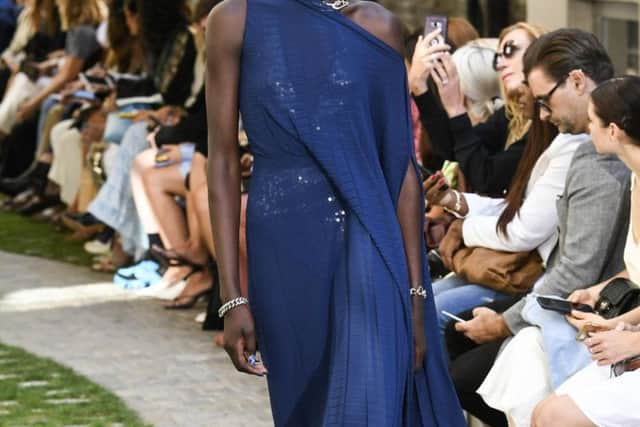

For Mouret, now 58, Maggie’s provides a platform to approach cancer in a more positive way because it provides a physical space where patients and their families can go. “By defining cancer physically, you can share it with people and deal with it in a better way. It’s so powerful what this place does. Those having treatment can come straight across to Maggie’s after, and for those who have come with someone, this place allows them to re-connect with the person who has just had treatment.
“Maggie’s creates a bubble of life that you take home after treatment.“All we need now is bedrooms, or cottages, where you can stay because you feel like you want to live there! And in parts of the UK there are no Maggie’s to go to, so there is much more work to be done. How more the dream could be.”
Mouret uses his influence in the fashion world to spread the word about Maggie’s and as head of his own label, he can take practical steps to raise funds, on this visit bringing 300 pairs of shoes from his shows to sell, as well as inviting his friend Marc Almond to sing.“We can all do something. It’s really important to understand that everything, big or small, can make a change in someone’s life.”
Maggie's Edinburgh
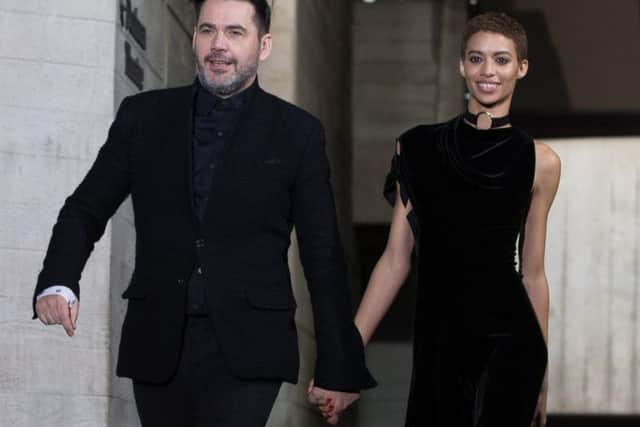

On a crisp winter’s day, Mouret appreciates the warm colour scheme and tactile textiles of the interior of Maggie’s, oranges, yellows and neutrals conveying a sense of calm, comfort and cheer.“I believe in colour therapy and these colours and the textures oblige you to use your senses,” he says. “They make your brain react and help you to move on with your treatment.”
Advertisement
Hide AdAdvertisement
Hide AdMouret’s latest collection, as well as featuring his trademark sharp silhouettes and elegant draping, also speak of his connection with Maggie’s. There are scarves tied around heads, reminiscent of the coloured chemotherapy caps that sit in a raffia basket in the hall.
“I wanted to put scarves on heads, not just because of Maggie’s, but because I think it’s really beautiful.” He also wanted to promote inclusivity and focus on identity.
“I think Maggie’s has opened me to the beginning of what’s changing in our world. I’m standing for all that sense of identities, transgender, fluidity.”For Mouret clothes are a language for expressing feelings both about life, and the subject our society has problems talking about, death. From our arrival when we’re wrapped in a clean cloth at birth to the winding sheet at the end, fabric is the warp and weft of our lives.
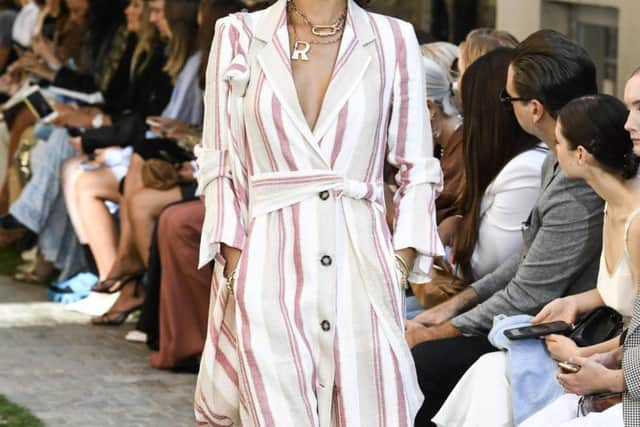

“None of us go naked in the street in the morning,” he says. “That’s why that’s a common nightmare,” he laughs. “All of us have a strong relationship to feel whole with ourselves through fabric. Fabric allows us to really feel ourselves as the people we stand for.”
Climate Crisis
But it’s not just about our attitude to ourselves that our clothes reflect, it’s our attitude to the planet and its resources. And within what he perceives as an atmosphere of fear and crisis on a global scale lies Mouret’s answer, reinvention. “I’m talking about the climate crisis and especially western society, where we are living in a world where the consumer is not going to be the answer any more. None of us can stand and wait for the world to come back to being a better place. It’s a crisis and we have to start now. Now is too late even. We have to start yesterday. And I think if our life is the problem, then our life is the solution.”
Whereas Mouret’s solution to the question ‘what to wear to that glamorous event’ back in 2005 and ever since was the Galaxy dress – his form fitting signature design that A-listers from Scarlett Johansson to Victoria Beckham have clamoured to wear on red carpets, while copies cascaded down to the high street – today his solution takes the form of an empty hanger.
Mouret's Arch and Hook 100% recycled hangers
Mouret’s reaction to the climate question has been to take the fashion industry to task over single use hangers, “that little piece of s*** that carries the outfit once from factory to store then goes to landfill or into the sea. Only 20 per cent of it is recycled and that is unacceptable.” His solution, developed with the company Arch and Hook is a hanger made from plastic collected from the oceans, crushed and recycled 100 per cent. “They will never go back to the sea,” he says, and is pushing the industry to adopt them as standard.
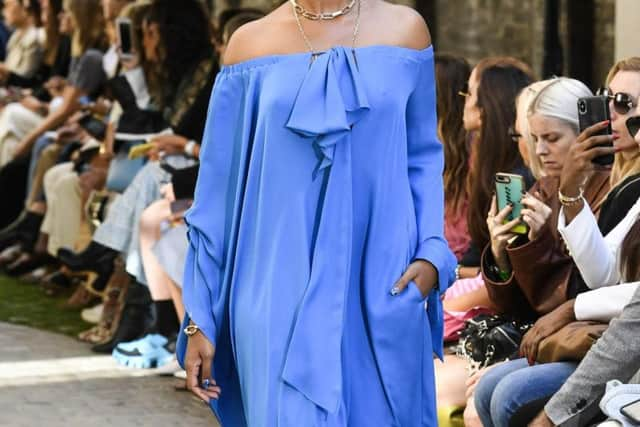

“For me if the oceans can be clean that’s an achievement. If it’s just me doing it, it’s not a big change, but all of the fashion industry doing it could make a big difference. That’s where we are now. It’s like Maggie’s. Maggie’s is an amazing thing, but with all of us, it’s a much bigger Maggie’s.”
Advertisement
Hide AdAdvertisement
Hide AdAnother way to tackle the climate crisis is through our attitude to fashion, says Mouret. With resources running out, the answer to waste is style. “Style is not right or wrong, it’s you, it’s you. You want to wear a feather in your hat? Wear a feather in your hat. If trend doesn’t exist any more, you have the right to be unique, and it’s not consumerism any more, it’s just identities.”
'My father wanted me to be the next butcher'
Back when Mouret was growing up in Lourdes in south-west France, he wasn’t a likely candidate for a career as a fashion designer. The son of Elise and Maurice, who ran a butcher’s shop, Roland was trained up from a young age to take over the family business.
“My father really wanted me to become the next butcher, and I began to realise I was trapped in a life I didn’t want.”
For Mouret the confinement was embodied by the clothes he wore to help his father.“It was a massive white apron, like my dad’s for cutting meat, and for a kid of seven it was long, like an evening gown, and touched the floor. For me clothes are something that trap you or free you in a situation and I felt trapped.“I think it was all unconscious, but that pushed me to love clothes, fashion, to watch TV about models catwalking in haute couture in Paris, and something clicked.”
Instead of becoming a butcher, Mouret left for Paris and worked “every job of fashion”, as a model, stylist and art director.“Every job but a fashion designer because I was frightened. The fear was of not succeeding, but at the age of 36 I realised that succeeding is irrelevant, you have to try. And if I didn’t try to be a fashion designer, I was going to become a bitter person. I had to try.”
The years spent in the boucherie weren’t wasted, however, in fact they were crucial to Mouret’s success for they taught him how to cut. For the designer the parallels between the professions of butcher and designer are obvious and there is no higher compliment you can pay him than to say he cuts fabric like a butcher.
“Yes, I’m a designer who cuts fabric like a butcher cuts meat. Butchers, at the beginning of last century, were considered as important as architects, because meat was such an expensive food and you couldn’t cut it badly. The way dad was cutting meat… the moment of the knife, the way you use it, every part of it, the strength of the hand to cut. If you can cut fabric like a butcher cuts meat, you are a really good designer, because you understand every fibre of the fabric and you will never lose a piece. We had the same creativity and he came to be very proud of me.”
Maurice and Elise, who is “still alive and kicking” smiles her son, also taught him customer relations and how to deliver a service. “I’ve never been successful because I came out of the best school, because I never went to the best school. No, I became recognised as a master of draping, because I’m a slave of fabric. Fabric is alive. Fabric talks and I follow.”
Inspired by women
Advertisement
Hide AdAdvertisement
Hide AdAlways praised as a designer by women who say he designs for them, it’s no surprise to hear that Mouret’s inspiration has always been women.“Women who enjoy being women. It’s so powerful. Women are a reflection of our society. And if they lose their freedom I lose my freedom. When men control culture, religion, power, women get put on a pedestal or put down, but there is never that sense of equality, or the idea that a problem should be approached regardless of gender.
“Take a young woman like Greta [Thunberg, the 16-year-old environmental activist], the way some men talk about her – her physique, her speech, it’s shocking. Just because she is fighting for a future. She has done nothing to hurt them. How dare they?”
Maybe they dare because she’s female?
“Yes. Yes. But that’s her power too,” says Mouret.
Inclusivity and gender
Women as role models for men hold no fear for Mouret who this year showed men on his catwalk wearing clothes designed for women.“I put men walking in my collection in women’s clothes, in big sizes. I like that clothing is of shared identity.”
His husband, the sculptor James Webster also wears a lot of clothes from his collection, which Mouret in turn steals back “once he has deformed them with wearing them, never new. That’s one of my suits he’s wearing today,” says Mouret, pointing at Webster, svelte and masculine in lean trousers and a sculptured jacket, proving that style transcends gender, that clothes aren’t ‘male’ or ‘female’.
“Why do we have to make a separation, that’s guys’, that’s girls’? We can recreate a social class,” he says.
“Clothes are just a shell. We have to cover ourselves. If a guy wants to wear a dress he wears a dress. I don’t put guys in dresses in my show but I understand it. If you put women’s clothes on men you see how they are masculine, and it’s subversive. I love that.”
As for his own clothes, Mouret dresses in dark trousers, shirt, boots and jacket, all carefully cut and quietly elegant, today the same as most days. “I just jump in them and forget it, because to be creative you have to forget yourself.”
Why the male menopause is no joke
His main criterion seems to be whether or not he can stay cool, in the temperature sense, as he explains with relish. “I am sweating, a lot! I’m 58 and I call it #themen-opause. Trust me, we are going there. The beauty of women is they talk about their problems, which allows men to talk about theirs too. Men have the menopause: we are sweating, losing our hair, get moobs and a stomach and it’s not nice.
Advertisement
Hide AdAdvertisement
Hide Ad“But women have taught us it’s not ageing, it’s transformation. Women are stronger at facing adversity, because the journey of a woman’s life from an early age is to face transformation from girl to young woman to mother to menopause. With a guy it’s just, guy, guy, more guy, guy, but it’s more complex. So I’m expressing it because that’s the only way you can change things.”
He sits back in his chair at Maggie’s and looks around him. “That’s the beauty of this place now, with space for activities for men too. And men need help to face adversity too, because they’re not as strong as women.”
And so we come back to his original inspiration: women in general, and individuals like Maggie’s founder Maggie Keswick Jencks, and those who brought him to Edinburgh, Sarah Murray and Lisa Stephenson, along with the many others who inspire women, and men, to walk through the doors of Maggie’s.
Maggie’s Edinburgh, Western General Hospital, Edinburgh (0131-537 3131, www.maggiescentres.org)